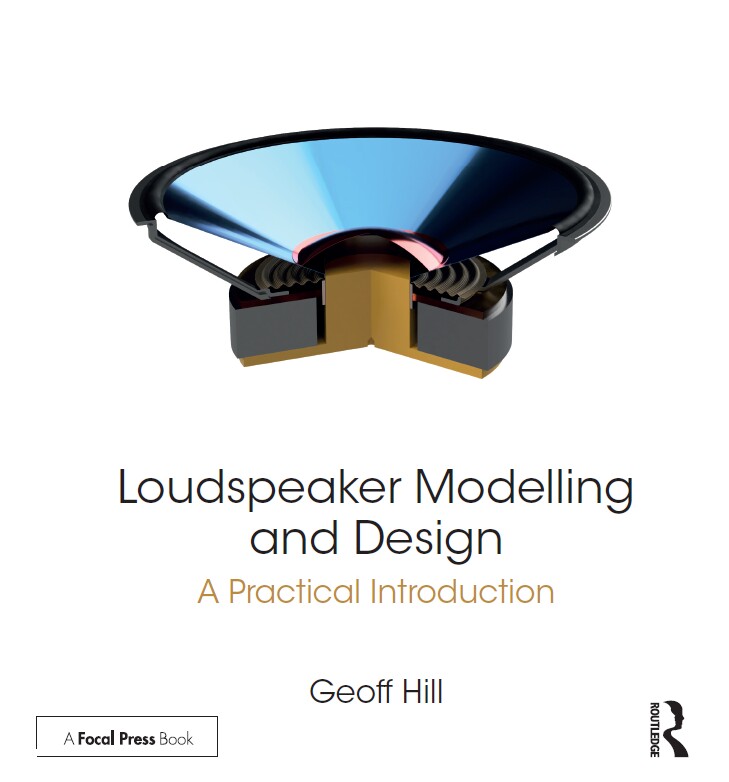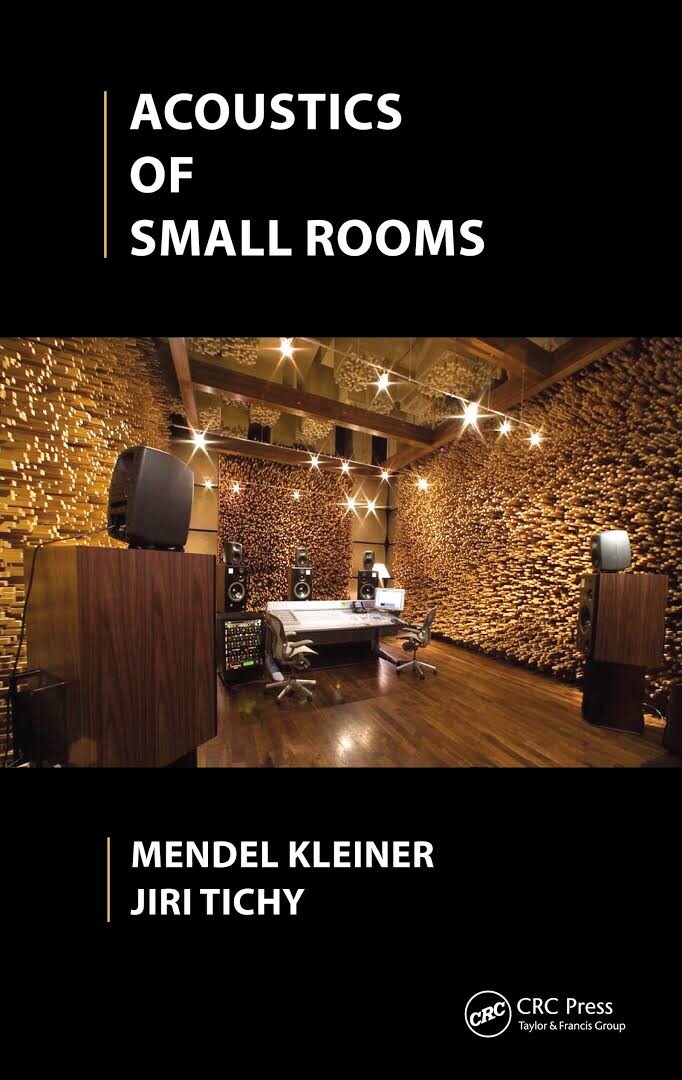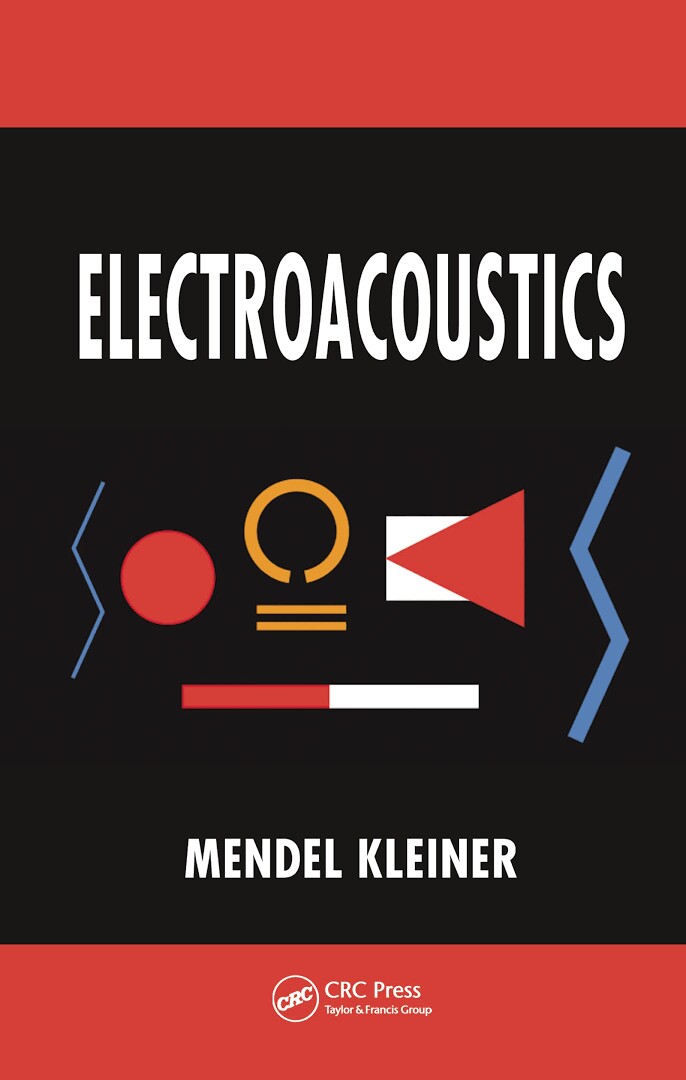Although I already have something along the lines of 200 technical audio and acoustics books, I am always on the lookout for another one—either to fill the odd gap in knowledge or to present new technology. Over this past summer, I bought three such tomes and I thought I would bring them to a wider audience.

First up is Loudspeaker Modelling and Design by fellow Englishman Geoff Hill. This is a unique book, written from a novel and practical perspective by a veteran of loudspeaker design. The book sets out to demonstrate how modern software and hardware can be applied to the processes behind loudspeaker design and modeling, and it examines the process—from the initial concept, through to specifications and theoretical simulations, to detailed design. The book is written in an easy-to-read and informative style, offering many practical asides and interesting anecdotes that make it even more readable.
The book brings together many different strands of modeling—from electromagnetic through to mechanical and acoustic—without becoming bogged down in heavy theoretical discussions. This is certainly not a “loudspeakers for dummies” book, however, although this did fleetingly cross my mind a couple of times. The book aims to bring together into one place the disparate strands that are required to design and specify modern loudspeaker drive units, and I think it does so very well. Although only dealing with moving-coil loudspeakers, the book, I don’t think, loses anything by not covering other loudspeaker types. It is based on firsthand practical experience (nearly 40 years of it), and, as they are, the 361 pages are already crammed with information.
A nice touch is that each of the 34 chapters begins with a summary of what is about to be covered; therefore, the chapters ease in the reader. Although 34 chapters might seem to portend a daunting read, each is reasonably short and well laid out, and there are good graphics to make this a pretty painless experience. The chapters are formed from eight main sections; again, this organization helps the reader to travel the labyrinth. The overview sections are as follows: (1) introduction, (2) basic theory, (3) loudspeaker models (as in mathematical modeling, not commercial forms), (4) the design process, (5) what’s really going on inside a loudspeaker, (6) FEA, BEM and integration (modeling), (7) mechanical design and (8) measuring a loudspeaker. A ninth section, the appendices, includes the glossary, references and the tutorial section.
One unique feature centers on the 11 chapters of tutorials that account for some 130 pages. These cover a range of current measurement and simulation programs, and they give a real user’s insight into their use. The section also includes an interesting chapter on statistics, discussing how they can be applied to loudspeaker measurement and production. Although the book is not intended to supplant the theory or academic methods taught in schools, colleges or universities, it certainly helps to bring some useful reality to the subject.

Costing $66.95 for the paperback version and $170 for the hardcover, this book is worth the money and it’s worthy of a place on my bookshelf.
The second book I bought was Acoustics of Small Rooms by Mendel Kleiner and Jiri Tichy. These are two academics of renown, but this is not a crusty tome only to be glanced at once and then put on a shelf never again to see the light of day. I bought the paperback version, which was a good value at $49, because I couldn’t really justify the $153 for the hardcover version. Although the book is very different in style from Geoff Hill’s Loudspeaker Modelling and Design, it is certainly still very accessible. It is thorough in its approach, as might be expected given that it was written by two experienced academics.
The book contains 14 chapters, filling 467 pages, and it covers a lot of ground. The best way for me to present what the book is all about, as well as what it covers, is simply to list the chapter headings. They are as follows: (1) physics of small room sound fields, (2) sound fields in enclosures, (3) geometrical acoustics, (4) sound absorption in rooms, (5) diffusion, (6) the ear, (7) psychoacoustics, (8) spatial hearing, (9) sound reproduction in small rooms, (10) low-frequency sound field optimization, (11) rooms for sound reproduction, (12) small rooms for voice and music practice, (13) modeling of room acoustics, (14) measurement.
As can be seen from the chapter topics listed, this book covers a lot more than just the acoustics of small spaces. There is an excellent chapter on psychoacoustics (28 pages) that does not follow the normal, well-beaten path; rather, it also includes rise time information of musical instruments and a good section on perceived loudness. The subsequent chapter on spatial hearing is also well worth a read, and it leads nicely into the chapter on sound reproduction in small rooms. The book is well researched, and it includes a good sprinkling of practical examples, which results in a well-balanced presentation. Even if you are not particularly interested in learning about the acoustics of small rooms, there is a lot of other useful information packed in here, which makes it a “must have” for almost anyone involved with acoustics, recording or sound reproduction.

My third read of the summer was Electroacoustics, also by Mendel Kleiner. This has a very different style as compared to Acoustics of Small Rooms, and it’s based on courses he gave at the undergraduate and graduate level. Therefore, you have to be prepared for lashings of equations and theory. In this respect, it is the absolute opposite of Geoff Hill’s Loudspeaker Modeling and Design. Indeed, many times while reading it, I was mentally asking for some practical examples of the theory. (I read this before finding Hill’s book). It is very thorough in its approach and it covers nearly all transducer types, discussing the key scientific and engineering principles of loudspeaker and microphone transducers. A number of chapters include homework and problem sections.
The book is composed of 25 chapters and seven appendices, and it extends to 596 pages. The chapters are arranged in a logical order: The first two are an introduction to the subject of electroacoustics and the book itself, as well as (usefully, and rather unusually) references to other books and references that cover the topic. Although this is not the book for those seeking to understand the wider application of electroacoustics in practice, it’s certainly designed to fit the needs of advanced undergraduate and postgraduate students, as well as transducer and loudspeaker designers.
Although the book has an easy-to-read style, I think much of the contents will be beyond the reaches of many of the “interested hobbyists” and laypersons, for whom the introduction claims it is also intended. It is, however, a comprehensive theoretical treatment of the subject, with the occasional practical gem thrown in. Thus, it should definitely be on the bookshelf of every serious transducer and loudspeaker engineer.
Although the book is listed at $145 (hardcover), the going rate seems to be around $78.
